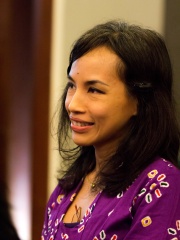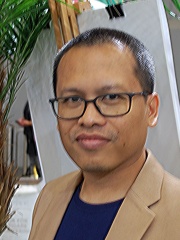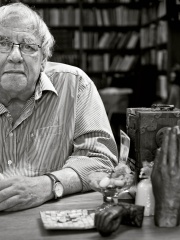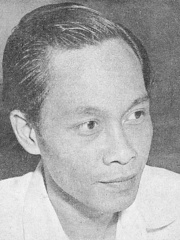
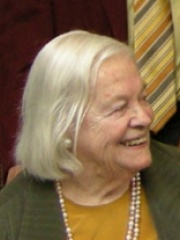
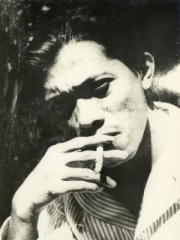


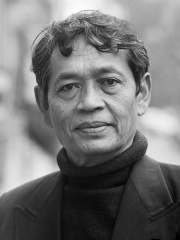
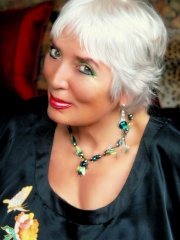
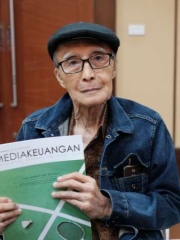
The Most Famous
WRITERS from Indonesia
This page contains a list of the greatest Indonesian Writers. The pantheon dataset contains 7,302 Writers, 13 of which were born in Indonesia. This makes Indonesia the birth place of the 67th most number of Writers behind Bangladesh, and Armenia.
Top 10
The following people are considered by Pantheon to be the top 10 most legendary Indonesian Writers of all time. This list of famous Indonesian Writers is sorted by HPI (Historical Popularity Index), a metric that aggregates information on a biography's online popularity. Visit the rankings page to view the entire list of Indonesian Writers.

1. Pramoedya Ananta Toer (1925 - 2006)
With an HPI of 64.16, Pramoedya Ananta Toer is the most famous Indonesian Writer. His biography has been translated into 37 different languages on wikipedia.
Pramoedya Ananta Toer (EYD: Pramudya Ananta Tur; 6 February 1925 – 30 April 2006), also nicknamed Pram, was an Indonesian novelist and writer. His works span the colonial period under Dutch rule, Indonesia's struggle for independence, its occupation by Japan during World War II, as well as the post-colonial authoritarian regimes of Sukarno and Suharto, and are infused with personal and national history. Pramoedya's writings sometimes fell out of favour with the colonial and later the authoritarian native governments in power. He faced censorship in Indonesia during the pre-Reformasi era even though he was well-known outside Indonesia. Dutch authorities imprisoned him from 1947 to 1949 during the War of Independence. During the transition to the Suharto regime, he was caught up in the shifting tides of political change and power struggles. Suharto had him imprisoned from 1969 to 1979 on the Maluku island of Buru and branded him a Communist. He was seen as a holdover from the previous regime, despite having struggled with it. It was on the Island of Buru that he composed his most famous work, the Buru Quartet. Not permitted access to writing materials, he recited the story orally to other prisoners before it was written down and smuggled out. Pramoedya opposed some policies of founding President Sukarno as well as the New Order regime of Suharto, Sukarno's successor. Political criticisms were often subtle in his writing, although he was outspoken against colonialism, racism, and corruption of the new Indonesian government. During the many years in which he suffered imprisonment and house arrest (in Jakarta after his imprisonment in Buru), he became a cause célèbre for advocates of human rights and freedom of expression. He was nominated for the Nobel Prize in Literature eight times.

2. Hella Haasse (1918 - 2011)
With an HPI of 61.16, Hella Haasse is the 2nd most famous Indonesian Writer. Her biography has been translated into 30 different languages.
Hélène "Hella" Serafia Haasse (2 February 1918 – 29 September 2011) was a Dutch writer, often referred to as the "Grande Dame" of Dutch literature, and whose novel Oeroeg (1948) was a staple for generations of Dutch schoolchildren. Her internationally acclaimed magnum opus is Heren van de Thee, translated to The Tea Lords. In 1988 Haasse was chosen to interview the Dutch Queen for her 50th birthday after which celebrated Dutch author Adriaan van Dis called Haasse "the Queen among authors". Haasse has the first Dutch digital online museum dedicated to the life and work of an author. The museum was opened in 2008 on her 90th birthday. Haasse has an asteroid named after her.

3. Chairil Anwar (1922 - 1949)
With an HPI of 58.66, Chairil Anwar is the 3rd most famous Indonesian Writer. His biography has been translated into 26 different languages.
Chairil Anwar (26 July 1922 – 28 April 1949) was an Indonesian poet and member of the "1945 Generation" of writers. He is estimated to have written 96 works, including 70 individual poems. Anwar was born and raised in Medan, North Sumatra, before moving to Batavia with his mother in 1940, where he began to enter the local literary circles. After publishing his first poem in 1942, Anwar continued to write. However, his poems were at times censored by the Japanese, who were then occupying Indonesia. Living rebelliously, Anwar wrote extensively, often about death. He died in Jakarta of an unknown illness. His work dealt with various themes, including death, individualism, and existentialism, and were often multi-interpretable. Drawing influence from foreign poets, Anwar used everyday language and new syntax to write his poetry, which has been noted as aiding the development of the Indonesian language. His poems were often constructed irregularly, but with individual patterns.

4. Amir Hamzah (1911 - 1946)
With an HPI of 57.56, Amir Hamzah is the 4th most famous Indonesian Writer. Her biography has been translated into 24 different languages.
Tengku Amir Hamzah (February 1911 – 20 March 1946) was an Indonesian poet and National Hero of Indonesia. Born into a Malay aristocratic family in the Sultanate of Langkat in North Sumatra, he was educated in both Sumatra and Java. While attending senior high school in Surakarta around 1930, Amir became involved with the nationalist movement and fell in love with a Javanese schoolmate, Ilik Sundari. Even after Amir continued his studies in legal school in Batavia (now Jakarta) the two remained close, only separating in 1937 when Amir was recalled to Sumatra to marry the sultan's daughter and take on responsibilities of the court. Though unhappy with his marriage, he fulfilled his courtly duties. After Indonesia proclaimed its independence in 1945, he served as the government's representative in Langkat. The following year he was killed in a social revolution led by the PESINDO (Pemuda Sosialis Indonesia), and buried in a mass grave. Amir began writing poetry while still a teenager: though his works are undated, the earliest are thought to have been written when he first travelled to Java. Drawing influences from his own Malay culture and Islam, as well as from Christianity and Eastern literature, Amir wrote 50 poems, 18 pieces of lyrical prose, and numerous other works, including several translations. In 1932 he co-founded the literary magazine Poedjangga Baroe. After his return to Sumatra, he stopped writing. Most of his poems were published in two collections, Nyanyi Sunyi (1937) and Buah Rindu (1941), first in Poedjangga Baroe then as stand-alone books. Poems by Amir deal with the themes of love and religion and his poetry often reflects a deep inner conflict. His diction, using both Malay and Javanese words and expanding on traditional structures, was influenced by the need for rhythm and metre, as well as symbolism related to particular terms. His earlier works deal with a sense of longing and both erotic and idealised love, whereas his later works have a deeper religious meaning. Of his two collections, Nyanyi Sunyi is considered the most developed. Amir has been called the "King of the Poedjangga Baroe-era Poets" and the only international-class Indonesian poet from before the Indonesian National Revolution.
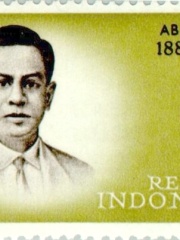
5. Abdul Muis (1883 - 1959)
With an HPI of 57.35, Abdul Muis is the 5th most famous Indonesian Writer. His biography has been translated into 22 different languages.
Abdul Muis (also spelt Abdoel Moeis; 1886–1959), was an Indonesian writer, journalist and nationalist. He advocated for Indonesia's independence from the Netherlands. He was the first person to be named an Indonesian national hero.

6. Nh. Dini (1936 - 2018)
With an HPI of 56.06, Nh. Dini is the 6th most famous Indonesian Writer. Her biography has been translated into 18 different languages.
Nurhayati Srihardini Siti Nukatin Coffin (29 February 1936 – 4 December 2018), better known by her pen name Nh. Dini (sometimes NH Dini in English), was an Indonesian novelist and feminist. She was the mother of Pierre Coffin, a French director and animator known for the Despicable Me franchise. She was one of the recipient of the literature award from the SEA Write Award in 2003.

7. Mochtar Lubis (1922 - 2004)
With an HPI of 55.43, Mochtar Lubis is the 7th most famous Indonesian Writer. His biography has been translated into 18 different languages.
Mochtar Lubis ([moxˈtar luˈbɪs]; 7 March 1922 – 2 July 2004) was an Indonesian journalist and novelist who co-founded Indonesia Raya and monthly literary magazine Horison. His novel Senja di Jakarta (Twilight in Jakarta in English) was the first Indonesian novel to be translated into English. He was a critic of Sukarno and was imprisoned by him, as well as by Suharto on several later occasions. He held strong anti-leftist views and was seen by critics as aligned with Indonesian National Armed Forces and pro-U.S forces that were opposed to Sukarno’s non-aligned policies, a charge that he himself denied.

8. Xaviera Hollander (b. 1943)
With an HPI of 54.29, Xaviera Hollander is the 8th most famous Indonesian Writer. Her biography has been translated into 19 different languages.
Xaviera Hollander (born 15 June 1943) is a Dutch former call girl, madam and author. She is best known for her best-selling memoir The Happy Hooker: My Own Story.

9. Sapardi Djoko Damono (1940 - 2020)
With an HPI of 53.45, Sapardi Djoko Damono is the 9th most famous Indonesian Writer. His biography has been translated into 17 different languages.
Sapardi Djoko Damono (20 March 1940 – 19 July 2020) was an Indonesian poet known for lyrical poems, and who was widely regarded as the pioneer of lyrical poetry in Indonesia. He died in South Tangerang, Banten on 19 July 2020 after a long illness.
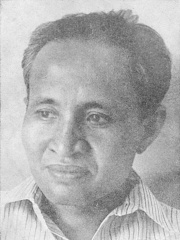
10. Sutan Takdir Alisjahbana (1908 - 1994)
With an HPI of 53.18, Sutan Takdir Alisjahbana is the 10th most famous Indonesian Writer. His biography has been translated into 15 different languages.
Sutan Takdir Alisjahbana (11 February 1908 – 17 July 1994) was an Indonesian author. He was born in Natal, North Sumatra. His family came from Minangkabau who migrated there in the 19th century. He was a founder and editor of Poedjangga Baroe. He became one of Indonesian literature's guiding lights in its formative years, particularly in the time around independence. Sutan Takdir believed that Indonesia could learn from the values of western civilization and remained a great exponent of modernism throughout his life. A Renaissance man himself – the author of numerous books on a range of subjects – he was working on a novel at the time of his death in 1994. The famous novel, Layar Terkembang, showed him as a progressive author. He died in Jakarta on 17 July 1994.
People
Pantheon has 13 people classified as Indonesian writers born between 1883 and 1975. Of these 13, 3 (23.08%) of them are still alive today. The most famous living Indonesian writers include Xaviera Hollander, Ayu Utami, and Eka Kurniawan. The most famous deceased Indonesian writers include Pramoedya Ananta Toer, Hella Haasse, and Chairil Anwar.
Living Indonesian Writers
Go to all RankingsXaviera Hollander
1943 - Present
HPI: 54.29
Ayu Utami
1968 - Present
HPI: 46.53
Eka Kurniawan
1975 - Present
HPI: 43.92
Deceased Indonesian Writers
Go to all RankingsPramoedya Ananta Toer
1925 - 2006
HPI: 64.16
Hella Haasse
1918 - 2011
HPI: 61.16
Chairil Anwar
1922 - 1949
HPI: 58.66
Amir Hamzah
1911 - 1946
HPI: 57.56
Abdul Muis
1883 - 1959
HPI: 57.35
Nh. Dini
1936 - 2018
HPI: 56.06
Mochtar Lubis
1922 - 2004
HPI: 55.43
Sapardi Djoko Damono
1940 - 2020
HPI: 53.45
Sutan Takdir Alisjahbana
1908 - 1994
HPI: 53.18
Jeroen Brouwers
1940 - 2022
HPI: 52.93
Overlapping Lives
Which Writers were alive at the same time? This visualization shows the lifespans of the 9 most globally memorable Writers since 1700.

